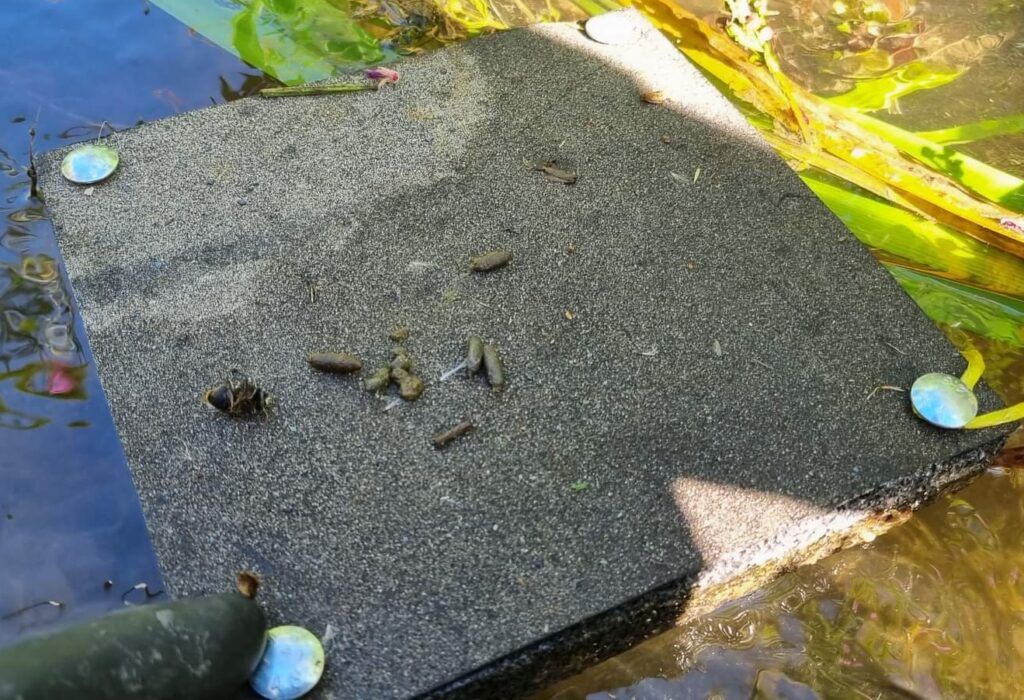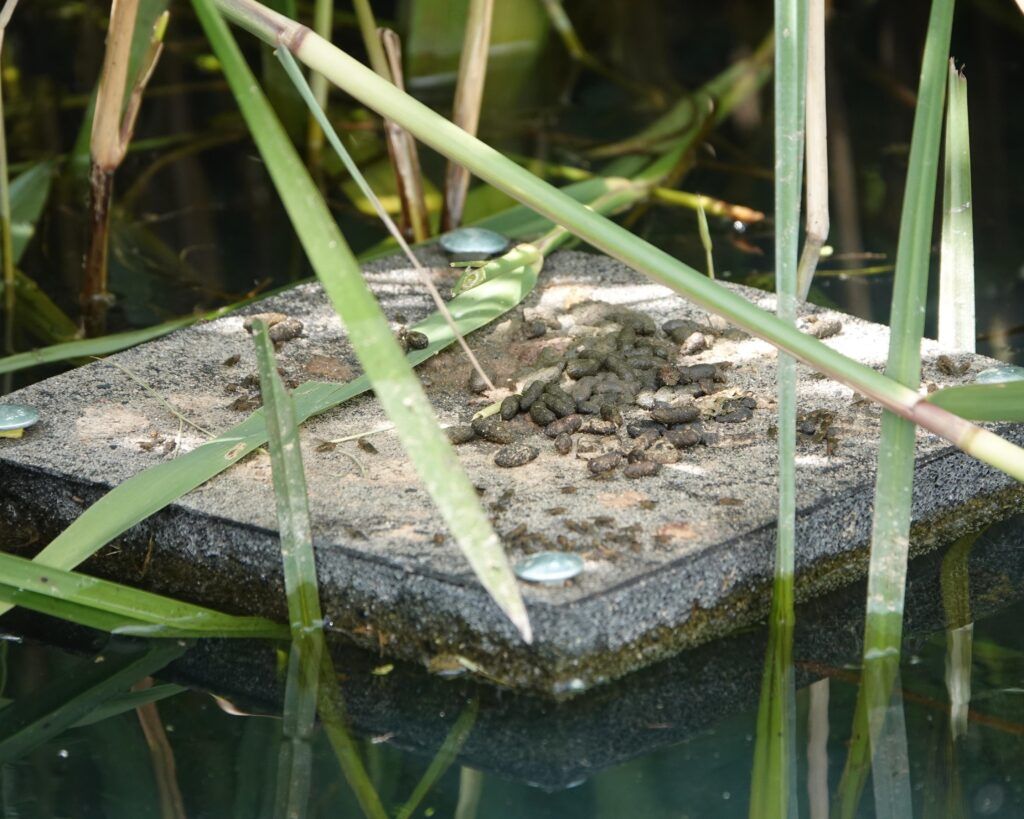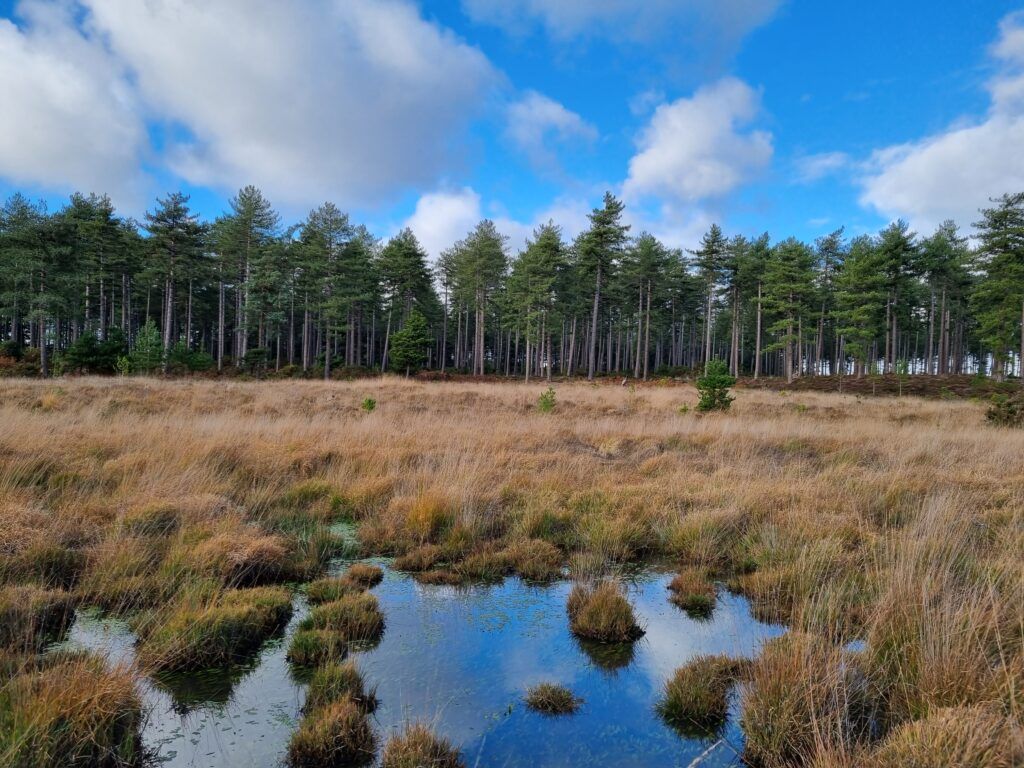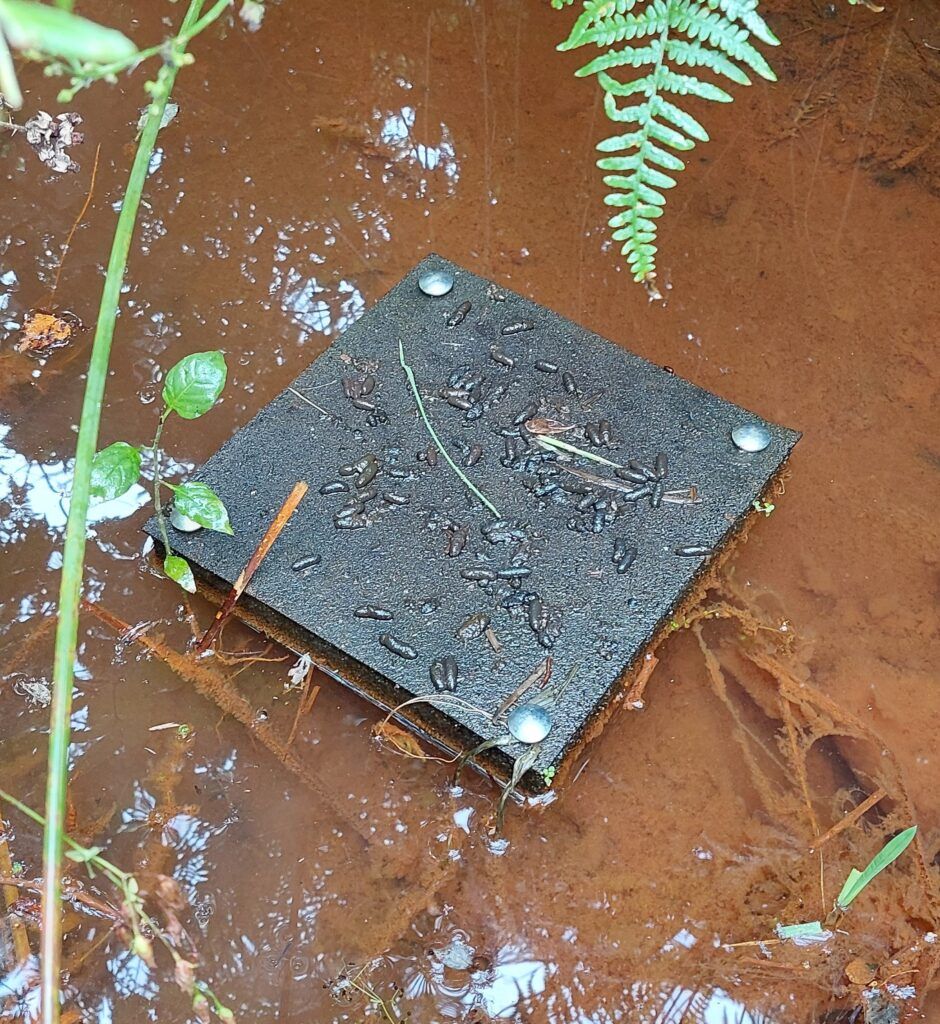In 2022, nine organisations took part in a trial investigating the effectiveness of using floating rafts to detect water voles by providing them floating platforms for their latrines (droppings). Water voles are naturally inquisitive, and it didn’t take long for them to explore the rafts and use them as artificial feeding platforms where they would also leave droppings.
By the end of the 1990s water vole populations had suffered a catastrophic 90% decline. This was due in part to habitat loss and fragmentation during the 20th century but predominantly predation by non-native American mink. By increasing our monitoring efforts for water voles, we can gain some key insights into where they are doing well, how many there are, and where we need to guide our best conservation efforts.
Traditionally, water vole surveyors walk along riverbanks looking for clues such as burrows, feeding signs and latrines. But in areas with thick vegetation, steep banks or poor bank stability, this method can be treacherous, or it may lead to evidence being missed.
The raft prototypes were designed and built by Wildcare, and the surveys were carried out by staff and volunteers from RSPB, National Trust, Forestry England, Yorkshire Wildlife Trust, PTES, Lincolnshire Chalk Streams Project, and Greater Lincolnshire Nature Partnership.


Deploying the rafts
Surveyors deployed up to 10 rafts along a 500m transect with a gap of at least 50m between rafts. They were placed in slow-moving water and attached to the bank like mini moored boats. The rafts are made with a buoyant foam base covered with bitumen felt for durability. Surveyors checked the rafts monthly between May and October and were encouraged to use binoculars to check the rafts – a safer option, especially when carrying out the survey alone.
Results
Between May and October, seven of the nine sites consistently had water vole droppings on their rafts. Feeding signs – including stems and reed leaves nibbled at the tell-tale 45-degree angle – were also spotted on rafts on several occasions.
All the sites had well-vegetated banks which had grown vigorously by mid-summer. The banks were accessible but continuous searching along the banks would still have been difficult. This is where the latrine rafts came into their own, as surveyors only need to access the banks at intervals to find the rafts to confirm water vole presence.
The feedback from surveyors was hugely positive, with one surveyor saying, ‘it was a quicker survey compared to the usual method of searching for signs. It also took less people to complete.’
Another surveyor said that the rafts ‘indicated water vole presence when other signs would not have been visible due to vegetation.’
Wareham, Dorset
We also had some exciting news from Mark Warn BEM, Wildlife Ranger for the Forestry Commission who has worked at Wareham Beat for over 30 years. By taking part in the latrine raft trial, Mark discovered a previously unknown population of water voles.
Mark deployed rafts at two locations near Wareham, Dorset. One site was known to support a water vole population across a large lowland heath valley mire – an extensive plain of water-logged peat – pictured below. The other site was a ditch 500m away from the mire, where water vole presence hasn’t been confirmed until now. Mark was delighted to find water vole latrines on the rafts along the ditch (pictured right) several times throughout the trial.
Interestingly, the rafts in the mire where water voles are present yielded no results, likely because the nature of this habitat already presents plenty of latrine and shelter opportunities in the form of grassy mounds and tussocks, suggesting that this type of habitat is not as appropriate for latrine rafts.

Image credit Emily Sabin
Aims for 2023
This year we will improve the trial by sourcing stronger twine to attach the rafts more securely to the banks, looking into sourcing more sustainable materials to construct the rafts themselves, and recommending that surveyors indicate their raft locations with wooden stakes or other visible markers, as well as GPS, so that they are easier to find.
If you or your organisation would like to be involved with the latrine raft trial in 2023, please email watervoles@ptes.org. Thank you.
Emily Sabin
Water Vole Officer
Header image credit Iain Green

